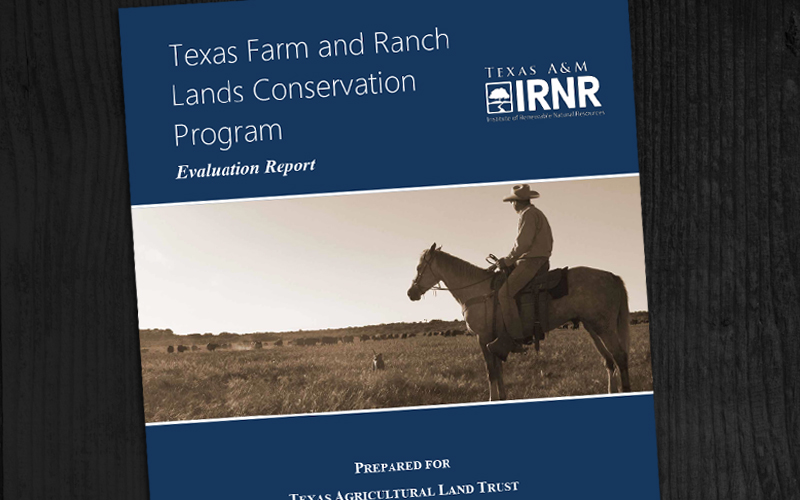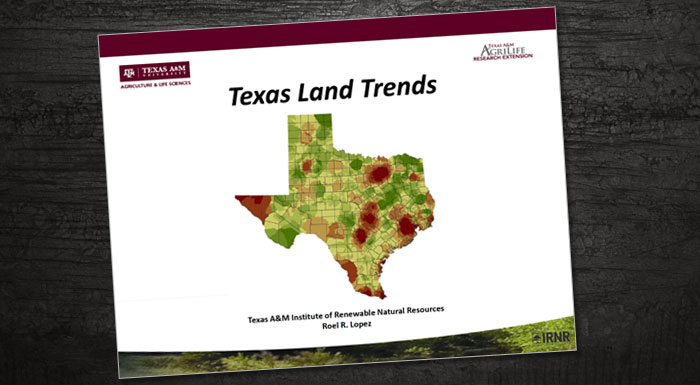Texas is comprised of 142 million acres of private farms, ranches, and forestlands, leading the nation in land area devoted to privately-owned working lands. For the purpose of this report, working landsare defined as farms, ranches, and family forests or agricultural lands with a 1-D/1-D-1 appraisal. These working lands are under increasing land conversion and fragmentation pressure. Due in part to rapid loss of agricultural lands, the Texas Legislature created the Texas Farm and Ranch Lands Conservation Program (TFRLCP) in 2005 and subsequently provided a $2M allocation to the program in 2015. The objective of this report was to evaluate the implementation of the TFRLCP under the management of the Texas Parks and Wildlife Department. The report is divided into three sections: (1) project assessments, (2) future demand, and (3) program recommendations. Under project assessments, a water assessment, working lands assessment, and a financial leveraging calculation were conducted for each TFRLCP project award. For the future program demand section, data collected from the Texas Parks and Wildlife Department’s (TPWD) Private Lands Advisory Committee (PLAC) and the Texas Land Trust Council (TLTC) land trust survey were summarized to gauge future demand for an expanded state-funded conservation easement program. In the final section, some program recommendations are provided to enhance the execution of the TFRLCP in promoting land conservation in the state. Some key findings and recommendations from the report are outlined below:
Key Findings:
• TFRLCP projects protected over 8,200 acre-feet of water with a replacement cost value of over $11.6M. From a water management strategy perspective, land conservation projects should be considered a low cost, effective strategy for protecting Texas’ water resources.
• TPWD PLAC and TLTC survey data suggest a strong landowner willingness (34%) to participate in a state-funded conservation easement program.
• TFRLCP performed exceptionally well in leveraging partner funds (7:1).
• Conservation of working lands in the most rural or most urban areas as a strategy should be further evaluated for the TFRLCP moving forward.




